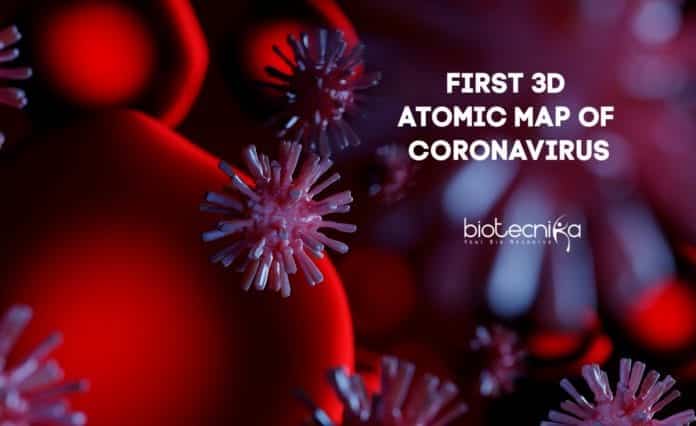First 3D Atomic Map of Coronavirus
In a critical step towards developing vaccines and treatments, the US scientists have announced their breakthrough creation of the first 3D atomic-scale map of coronavirus. This is a map of the part of the virus that attaches to and infects human cells.
The COVID-19 virus’ death toll jumped past 2,000 and has around 74,185 confirmed cases of infection so far since the virus first emerged.
The Spike Protein
The Chinese researchers had made the genetic code of the virus publicly available which the research team in this study made use of. Researchers from the National Institutes of Health (NIH) and the University of Texas at Austin developed a stabilized sample of a key part called the spike protein, after studying the genetic code of the virus.
Using cutting-edge technology known as cryogenic electron microscopy, the researchers then imaged the spike protein. Jason McLellan, UT Austin scientist and who led the research said, “We want to introduce the spike into humans, which is really the antigen that would prime their immune response to make antibodies against this so that their immune systems are ready and loaded to attack when they see the actual virus.”
Developing
the engineering methods required to keep the spike protein stable was feasible as Jason and his colleagues had already spent many years studying other members of the coronavirus family including MERS and SARS.The National Institutes of Health (NIH) is testing this engineered spike protein itself as a potential vaccine.
The 3D Atomic Map
To provoke a greater immune response by improving the model, the team is sending the map of its molecular structure out to collaborators around the world.
To treat those already infected with the virus, the model can also help scientists developed new proteins, or antivirals, to bind to different parts of the spike and prevent its functioning.
At the Texas A&M University-Texarkana, Benjamin Neuman, a virologist who was not involved in the work said, “This is a real breakthrough in terms of understanding how this coronavirus finds and enters cells. The structure is of the most important coronavirus proteins and it is a beautiful clear structure. From the structure, we can see the spike is made of the three identical proteins. One of these proteins effectively gives the virus a longer reach as it flexes out above the rest.”
Neuman added, “For vaccine development, mapping out the location and size of chains of sugar molecules which the virus uses in part to avoid being detected by the human immune system is one useful aspect of this structure.
The cryogenic electron microscopy involves the use of electron beams for examining the atomic structure of biomolecules that are frozen to help preserve them. This technology was developed by three scientists who were awarded the Nobel prize in chemistry in 2017.
The journal Science published this study’s findings.
































